- Details
-
Published: Monday, 16 July 2018 18:00
Contents
 2017 saw the publication of a new version of ISO/IEC 17025 - General requirements for the competence of testing and calibration laboratories. Among other things, the new Standard adopted a substantially revised structure, including different management system options. The 2017 edition placed new emphasis on "risks and opportunities", included clearer reference to sampling activities, and added new requirements around conformity assessment and a new emphasis on metrological traceability.
2017 saw the publication of a new version of ISO/IEC 17025 - General requirements for the competence of testing and calibration laboratories. Among other things, the new Standard adopted a substantially revised structure, including different management system options. The 2017 edition placed new emphasis on "risks and opportunities", included clearer reference to sampling activities, and added new requirements around conformity assessment and a new emphasis on metrological traceability.
This brief Information Leaflet, prepared by the Eurachem Education and training Working Group, gives a quick overview of the main changes in the 2017 edition of the Standard.
Note: See 'Maintenance' below for further information on continued relevance of this Information Leaflet.
Availability
The leaflet is available in several different languages:
- View/download the leaflet in English (pdf, 399 kB, published 2018-07-16)*
- View/download the leaflet in Bulgarian (pdf, 213 kB, published 2018-07-16)*
- View/download the leaflet in Estonian (pdf, 445 kB, published 2020-02-14)*
- View/download the leaflet in Farsi (pdf, 680 kB, published 2019-07-15)
- View/download the leaflet in Georgian (pdf, 562 kB, published 2018-12-26)*
- View/download the leaflet in Russian (pdf, 530 kB, published 2019-03-18)
- View/download the leaflet in Spanish (pdf, 310 kB, published 2018-07-16)*
- View/download the leaflet in Turkish (pdf, 483 kB, published 2018-07-16)*
* File updated 2024-11-07 to correct link to Eurolab Cookbooks and update references
Translations
Translation into other languages is encouraged for members of Eurachem. Other offers of translation should be directed to the Eurachem Secretariat for permission. The Eurachem policy on maintenance and development of Eurachem guidance, available on the Policies page, gives further information on translation.
Maintenance of this information leaflet
As of 2023, the date of the most recent periodic reviewNote 1 of this Information Leaflet, ISO/IEC 17025:2017 is well established in accredited laboratories. The responsible Eurachem Working Group nonetheless consider that information in the leaflet remains of current interest and have consequently confirmed the leaflet in its original form as current Eurachem guidance.
Top^^
Note 1. Eurachem policy on maintenance of Eurachem guidance can be found on the "Eurachem Policies and Procedures" page on this website.
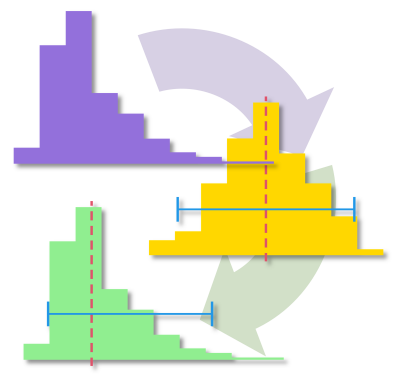


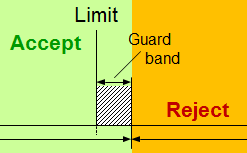 This information leaflet is intended for laboratories perfoming chemical analyses. It has been prepared by the Eurachem Measurement Uncertainty and Tracability Working Group (see
This information leaflet is intended for laboratories perfoming chemical analyses. It has been prepared by the Eurachem Measurement Uncertainty and Tracability Working Group (see 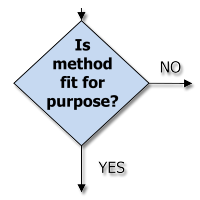
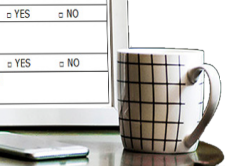 A laboratory will occasionally have a poor performance in a PT scheme. When this occurs, the laboratory should acknowledge it, carry out an investigation and document a review of possible causes, even if it decides not to take any specific action. This leaflet, prepared by the EURACHEM
A laboratory will occasionally have a poor performance in a PT scheme. When this occurs, the laboratory should acknowledge it, carry out an investigation and document a review of possible causes, even if it decides not to take any specific action. This leaflet, prepared by the EURACHEM 
 Test items are sometimes available from proficiency testing (PT) providers after the completion of a PT round. The EURACHEM
Test items are sometimes available from proficiency testing (PT) providers after the completion of a PT round. The EURACHEM  2017 saw the publication of a new version of ISO/IEC 17025 - General requirements for the competence of testing and calibration laboratories. Among other things, the new Standard adopted a substantially revised structure, including different management system options. The 2017 edition placed new emphasis on "risks and opportunities", included clearer reference to sampling activities, and added new requirements around conformity assessment and a new emphasis on metrological traceability.
2017 saw the publication of a new version of ISO/IEC 17025 - General requirements for the competence of testing and calibration laboratories. Among other things, the new Standard adopted a substantially revised structure, including different management system options. The 2017 edition placed new emphasis on "risks and opportunities", included clearer reference to sampling activities, and added new requirements around conformity assessment and a new emphasis on metrological traceability. Measurement results are only fit for purpose if the reported uncertainty is correct and has a magnitude small enough for the intended use. The target measurement uncertainty (target MU) is the maximum admissible uncertainty defined for a specific measurement goal. This information leaflet provides a short and accessible introduction to the idea of target measurement uncertainty.
Measurement results are only fit for purpose if the reported uncertainty is correct and has a magnitude small enough for the intended use. The target measurement uncertainty (target MU) is the maximum admissible uncertainty defined for a specific measurement goal. This information leaflet provides a short and accessible introduction to the idea of target measurement uncertainty.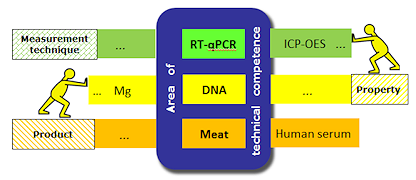 An accredited laboratory needs to define in which PT schemes it should enrol and how often it should participate. The EURACHEM
An accredited laboratory needs to define in which PT schemes it should enrol and how often it should participate. The EURACHEM 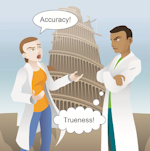 This leaflet, prepared by the Eurachem
This leaflet, prepared by the Eurachem